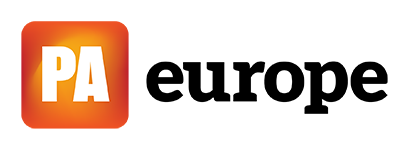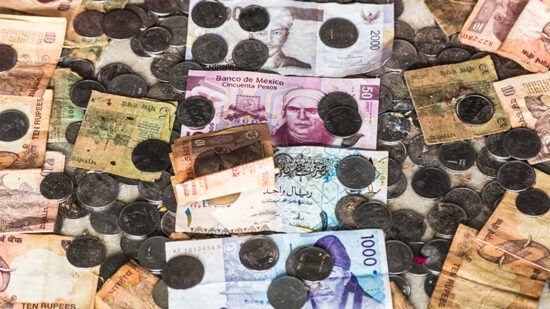A raft of Asia-based asset managers have expanded into Europe in recent years but many have met with scant success, according to a new study by US asset manager Northern Trust.
State-run investment giant China Asset Management, for example, established its Luxembourg Ucits fund range in 2010 to tap European investors. However, assets of these funds – sold via its Hong Kong subsidiary – totalled just 0.7% of its total AUM this year ($454.9m).
Japan’s Nikko Asset Management, meanwhile, now sells 13 funds across Europe. However, total assets stood at just $309m at the end of January, accounting for just 0.14% of its total AUM.
Similarly, Seoul-headquartered Mirae Asset Global Investments, which operates in 12 European markets, has just 1.96% of its AUM sourced from European investors.
Hong Kong-based Value Partners, meanwhile, which has five Ucits funds in Europe, has only sourced $211m, or just 1.3% of its total AUM, according to the report.
Different distribution landscape
Asia-based managers seeking to launch or build operations in Europe have found European markets extremely challenging with additional knotty considerations, according to the Northern Trust report.
More than 4,000 asset managers already serve the European market offering at least 32,000 investment products, the report states, which means Asia-based asset managers are wading into a highly competitive region.
Unlike the Asian market, the European market is 73% institutional, which means distribution is largely business-to-business, with limited sales made directly to the retail investor.
“Asian asset managers who are used to selling products directly to individuals and enticing them with free phones or other inducements will find that a similar strategy will not work in Europe,” the report said.
In addition, retail distribution across Europe may vary widely from one market to another.

Source: Northern Trust report
For example, the UK retail space is dominated by independent financial advisers (IFAs), which account for 60% of fund distribution in the market, according to the report.
The size of the IFA channel may appeal to new entrants, but it is dominated by domestic funds.
“Managers need a presence on-the-ground to understand the market and forge key relationships.” the report said.
In continental Europe, meanwhile, the study said that Asian managers wishing to offer institutional and retail products often opt to build relationships with banks, as they make up at least 80% of distribution in many countries.
However, European banks – which have been focused on driving costs down – have been reducing the number of asset managers they work with, which is driven by the Mifid II directive, the study noted.
The average bank’s third-party buy list is just 21 providers and is expected to be reduced to as few as half a dozen.
“This, in turn, may offer both challenges and opportunities for fund managers. While banks may focus on building up their range of in-house funds, they may also develop white-label agreements with specialist fund managers, giving rise to sub-advisory opportunities,” the study said.
Local offices required
In light of the complicated distribution landscape, Asia-based managers should ensure that set up a local sales team, the report suggests.
“Managers of a significant size should make their local presence felt. Smaller managers can begin with one or two targeted markets or channels, or they could selectively work with an established third party marketing firm,” it said.
Hendrik Von Ripperda-Cosyn, London-based country head and senior director for EMEA sales at Value Partners, highlighted the importance of having European operations instead of just simply registering funds in the region for distribution and replicating its Asia-focused products.
Similarly, Bea Union Investment, which joined the Swiss-Hong Kong mutual recognition of funds scheme, is facing difficulties with fund distribution in Switzerland and is now seeking a strategic partner that would help market its products to distributors. The firm does not yet have operations in Europe.
The report noted that success always take time. European fund buyers, including distributors, generally require a three-year track record before investing in a product. In addition, they are more comfortable in products with at least €100m ($115m) in AUM.
The Ucits dilemma
Establishing Ucits funds has become a common strategy for Asia-based asset managers that are planning to expand in Europe, given that the platform is recognised across the European market.
A “scattergun approach” – registering funds in each jurisdiction – on the surface makes sense and should theoretically attract the largest possible pool of clients but it carries with it the risk that it raises costs significantly with no guarantee of raising assets, according to the Northern Trust study.
“Setting up a Ucits fund structure does not mean registration in each country will be an identical experience. Different countries have different requirements, including a variety of registration costs, agent fees and marketing rules. Ensuring marketing materials, such as fund factsheets, comply in every jurisdiction can be a costly exercise,” it said.
The Ucits fund structure obviously has its merits. Managers targeting large European institutional investors as well as the retail market would be better served by Ucits funds than Cayman-registered funds, which tend to target only a small pool of sophisticated investors, the report adds. In addition, managers can launch Ucits funds in both their Asian home markets as well as across Europe.
For more insight on asset and wealth management in Asia, please click on www.fundselectorasia.com







